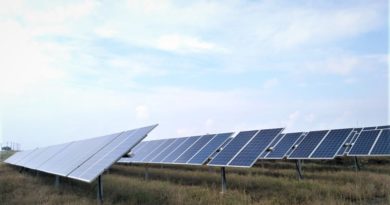Modern Solar Systems are beyond Panels and Inverters
Solar Systems seem simple wherein solar radiation falls on the PV panels and gets transformed into usable form of energy that is electricity. However, the people working in the sector know that the reality is different.
Software applications and safety have also become integral part of most of the solar systems gradually. We’ll try to briefly explain both the aspects here.
The software applications have become an integral part starting from design, engineering, construction, Installation & Commissioning and thereafter long-term Operation and Maintenance services. This also helps in forecasting of the potential power generation which is a requirement for the utility -scale projects.The smart sensors and data loggers have become part of the BOS (Balance of the Systems) of most of the modern Solar Systems. The key importance of all these are to take an informed decision based on the captured data.
The application of the software is not restricted to the utility -scale projects only but to the Distributed Renewable Energy (DRE) as well like Solar Rooftop, Mini Grids, Off-grid power plants as well as Solar Pumps.
PV software applications analyse data coming from all the components such as panels, trackers, inverters, environmental instrumentation, transformers and grid interface units at different intervals, and then synthesize this information into actionable items through analytics and reporting tools for remote monitoring and asset management. Alarms are also set to intimate field technicians and maintenance staffs for faster and more effective troubleshooting and resolution. The traditional Solar Pumping systems aresometime criticised for extracting more than the required quantity of underground water but the recent usages of smart sensors, data loggers have proved that the operation of the pumps can be controlled based on the actual moisture requirements of the fields based on various cropping requirements.
The other important aspect to consider as an integral part of any solar system is Electrical hazards and how to minimise the potential risks.The most common hazards are as below:
- Shock or Electrocution
Current as low as 75 mA (milliamps) isconsidered lethal sometimes. The human body has a resistance of 600 ohms. So, if exposed to 120 V, the amount of current can pass through a person’s body is 0.2 Amps that is 200 mA(as per formula V= IR) which is much more than the lethal limit. The National Electrical Code (NEC) requires the provision of “rapid shutdown” of PV systems both inside and outside the PV array boundary.
- Arc faults that cause fire
The heat generated by the electric discharge can cause the wire insulation to deteriorate and thus cause a spark or “arc” that causes a fire. To protect against arc faults, the system needs to install an arc-fault circuit interrupter (AFCI) outlet or an AFCI circuit breaker or similar system. AFCIs detect low level hazardous arcing currents and shut off the circuit or outlet to reduce the chances of such an arc fault sparking an electrical fire.
- Arc flash leading to explosion
Large-scale PV arrays with medium and high levels of voltage are susceptible to arc flash.Arc flash is an issue for systems over 400 V so both residential as well as commercial inverts are at risk depending on the input voltage it is designed for. Before the advent of large-scale solar energy systems, arc flash was solely considered an AC issue since DC voltage was limited to off-grid applications where batteries of less than 100 V were used.
The most important way to avoid such electric hazards are to use measuring instruments, test leads and fuses with proper ratings. Also, it is necessary to wear appropriate PPE (Personal Protective Equipment), including arc-rated clothing, gloves, safety goggles, hearing protection, and leather footwear as required for the voltage one is working on.
So, the modern solar systems demand more than just Panels and Inverters.
References:




Pingback: Is Balance of System (BOS) Equally Important for Solar Plant? - SolarPost